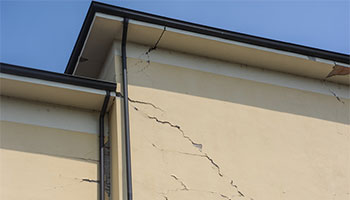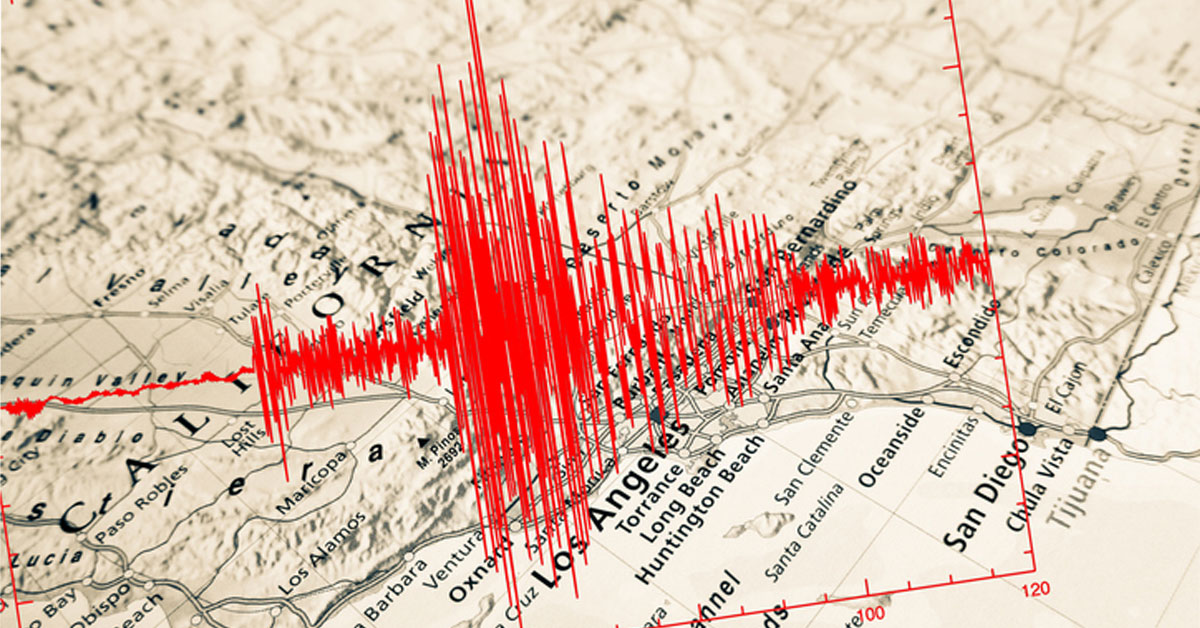California experiences more earthquakes than any other state in the Lower 48. During 2024, the Golden State was rocked by over 39,000 earthquakes. Although most of these were small enough not to cause damage or be felt, four quakes registered above a magnitude of 5 on the Richter scale. As of April 2025, California has already experienced 9 quakes above the magnitude of 4. These earthquakes may be considered small, but they come on the 30-year remembrance of the 1994 6.7 Northridge earthquake that caused extensive damage. Due to its location on the various fault lines, it’s important for California residents to be prepared for a quake with earthquake insurance whether they own their home or not. Let’s cover some basics on what earthquake insurance does and does not cover.
Key Takeaways:
- California experiences more earthquakes per year than any other Lower 48 state.
- There are two primary ways to purchase earthquake insurance: through the CEA or private insurer.
- Earthquake insurance can cover your home’s structure, personal property, and additional living expenses. However, it will not cover detached structures, pools, or fences unless a specific add-on is applied.
How Do I Purchase Earthquake Insurance in California?
There are two primary ways California residents can purchase earthquake insurance.
The California Earthquake Authority (CEA)
The California Earthquake Authority (CEA) is one of the leading residential earthquake insurance providers in the Golden State. However, you cannot purchase a policy directly from the CEA. Instead, you must buy your CEA policy through one of the 22 insurance companies that the CEA works with, such as Mercury, Safeco, Progressive, and other major providers.
Earthquake Insurance Through Private Insurers
Although most policies are sold through CEA, you do not have to purchase an earthquake policy through a CEA-affiliated insurer. Companies like GeoVera and Arrowhead can provide similar coverage options if you choose a private insurer. When shopping for private earthquake insurance, read the details of the proposed policy carefully to ensure you are getting the same, or better, type of coverage as you would through a CEA policy.
What is Earthquake Insurance and What Does it Cover?
A typical earthquake insurance policy contains three main components: damage to your home (referred to as “dwelling coverage”), personal property coverage, and additional living expenses (ALE).
Dwelling Coverage (Coverage A)

Dwelling coverage will cover damage to your home’s structure from an earthquake, such as your home’s walls, damage to your roof, or any attached structures like a garage. If an earthquake damages your home’s structure, this coverage will help provide financial assistance for repairs up to your policy’s limits.
Dwelling limits for earthquake insurance typically mirror the limits of your dwelling coverage on your home insurance policy. Dwelling coverage also comes with a deductible, typically 5%, 10%, 15%, 20%, or 25%. This coverage will not pay for repairs on features not attached to your home, such as pools, fences, or detached patios. You do not need this type of coverage if you are a renter. If you own a condo, you may need to purchase this coverage if your association does not cover your dwelling.
Personal Property (Coverage C)

As with home insurance, earthquake insurance covers personal property damaged by seismic activity.
Personal property coverage includes furniture, TVs, computers, and other appliances in your home up to your policy’s limits. However, some fragile or valuable items may not be covered unless you include additional add-ons. Limits for personal property typically begin at $5,000 but can be increased to suit your needs.
Additional Living Expenses (ALE) or Loss of Use *(Coverage D)
The final part of a standard earthquake insurance policy covers temporary and additional living costs if you are forced to evacuate due to an earthquake or if your home is being repaired due to damage from an earthquake. This will cover the temporarily renting a house, apartment, or hotel room. Restaurant bills, moving fees, and storage fees can also be covered up to your policy’s limits.
What is Not Covered by Earthquake Insurance?
Earthquake insurance can cover a lot, but there are a few key situations where your policy may not provide financial assistance.
- Fire damage: If an earthquake strikes and causes a fire in your home, your earthquake policy will not provide any coverage. However, your standard homeowner’s insurance should cover fire-related damage up to your policy’s limits.
- Flood damage: Floods are not covered by earthquake insurance. If an earthquake causes a flood and your home is damaged, you’ll need flood insurance to help with repairs.
- Vehicles: Your policy will not protect your car if it sustains damage due to tremors. In these cases, comprehensive insurance will help repair your vehicle.
- Land: Most policies do not cover damage to your land caused by sinkholes and other earth movements unrelated to earthquakes.
Can I Purchase Earthquake Insurance If I Rent or Own a Condo
Renters

A typical renters insurance policy will not provide coverage if your living space or belongings are damaged by an earthquake. Instead, you’ll need to purchase a separate policy to be protected, especially if you live near a major fault line. The best part? Earthquake insurance for renters is often inexpensive, depending on additional factors such as where you live, the coverage required, and any deductibles that you choose.
Condo Owners
Your typical California condo insurance policy will not cover damage caused by an earthquake. To cover your belongings, you’ll need to purchase a separate insurance policy. Without a stand-alone policy, you’ll be responsible for replacing and repairing any damage caused.
How Much Does Earthquake Insurance Cost?
The price you pay for earthquake insurance will vary on multiple factors and can differ for every homeowner, renter, or condo owner. Your premium will depend on some of the following factors:
- The age of your home.
- Where you are located—some homes alongside active fault lines will likely have higher rates than elsewhere.
- The materials your home is built with and how much it will cost to repair.
- The deductible amount that you choose.
If you’d like to better understand how much you’ll pay for earthquake insurance, the CEA has a premium calculator that you can use here.
Don’t Risk Being Uninsured
If you’re a California resident, carrying an earthquake policy can help you avoid paying for extensive repairs and additional living expenses after a major earthquake. California has over 15,000 known faults, 500 of which are active. Additionally, the CEA claims that there is a >99% chance of 1 or more 6.7 or greater earthquakes striking California at some point in the future. However, we cannot accurately say when a significant tremor will strike because we cannot predict earthquakes.
Regardless of your living situation, it’s essential that you protect yourself from the extensive damage quakes can cause. At AIS, we can help you find an earthquake policy that works for you. To learn more about your coverage options, call us today at (888) 772-4247.
The information in this article is obtained from various sources and offered for educational purposes only. Furthermore, it should not replace the advice of a qualified professional. The definitions, terms, and coverage in a given policy may be different than those suggested here. No warranty or appropriateness for a specific purpose is expressed or implied.


